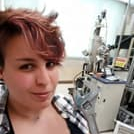Advances of Thermoelectric Materials
A special issue of Inorganics (ISSN 2304-6740). This special issue belongs to the section "Inorganic Materials".
Deadline for manuscript submissions: closed (30 November 2023) | Viewed by 10648
Special Issue Editors
Interests: electronic structure theory: materials for energy conversion; magnetic and optical properties of the matter; chemical–physical properties of surfaces; machine learning: automatic learning processes applied to the condense matter theory and materials discovery
Special Issues, Collections and Topics in MDPI journals
Interests: thin films; oxides; superconductors; thermoelectrics; energy materials; heat transfer; vortex matter; sustainability
Special Issues, Collections and Topics in MDPI journals
Interests: energy materials; oxides; skutterudites; thin films; thermoelectrics
Special Issues, Collections and Topics in MDPI journals
Special Issue Information
Dear Colleagues,
Thermoelectric energy conversion represents an excellent viable way to reduce greenhouse gas emissions and provide energy security to an increasing global population. However, although significant improvements in the performance of thermoelectric materials have been recently achieved, the path for practical applications of thermoelectric devices appears still long.
The proposed Special Issue in Advances of Thermoelectric Materials is to publish a set of papers that will help discover novel thermoelectric materials and provide a deeper understanding of the properties of existing ones through the application of theoretical and experimental methods. In particular, the correlation between material structure and thermoelectric properties, thermal transport, and thermal conductivity is noteworthy.
The materials framework may include, but is not limited to, ceramics, oxides and chalcogenides, alloys and intermetallic, 2D structures, and nanoalloys that combine inorganic and organic components. Papers that report the application of well-consolidated approaches for materials discovery, and papers that report the development of new methods or the enhancement of existing approaches, are of particular interest.
Dr. Marco Fronzi
Prof. Dr. Paolo Mele
Dr. Giovanna Latronico
Guest Editors
Manuscript Submission Information
Manuscripts should be submitted online at www.mdpi.com by registering and logging in to this website. Once you are registered, click here to go to the submission form. Manuscripts can be submitted until the deadline. All submissions that pass pre-check are peer-reviewed. Accepted papers will be published continuously in the journal (as soon as accepted) and will be listed together on the special issue website. Research articles, review articles as well as short communications are invited. For planned papers, a title and short abstract (about 100 words) can be sent to the Editorial Office for announcement on this website.
Submitted manuscripts should not have been published previously, nor be under consideration for publication elsewhere (except conference proceedings papers). All manuscripts are thoroughly refereed through a single-blind peer-review process. A guide for authors and other relevant information for submission of manuscripts is available on the Instructions for Authors page. Inorganics is an international peer-reviewed open access monthly journal published by MDPI.
Please visit the Instructions for Authors page before submitting a manuscript. The Article Processing Charge (APC) for publication in this open access journal is 2700 CHF (Swiss Francs). Submitted papers should be well formatted and use good English. Authors may use MDPI's English editing service prior to publication or during author revisions.







